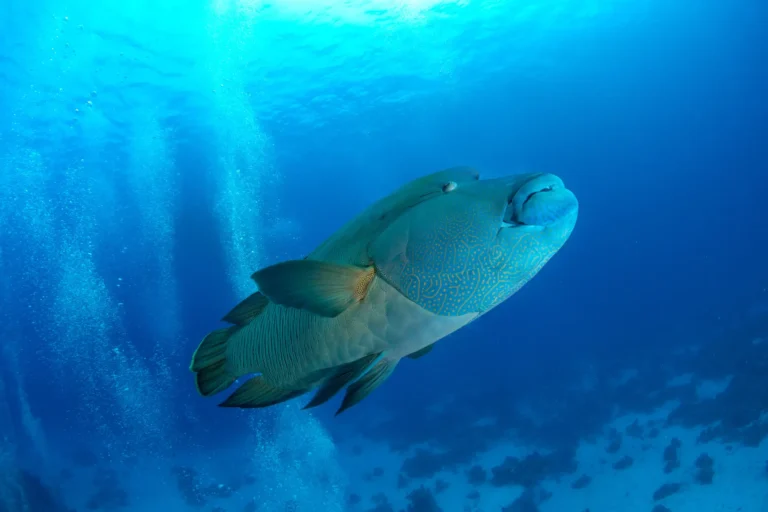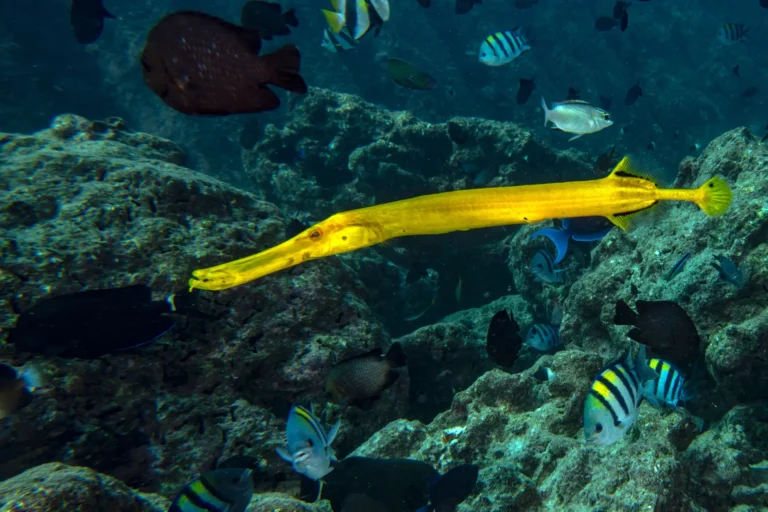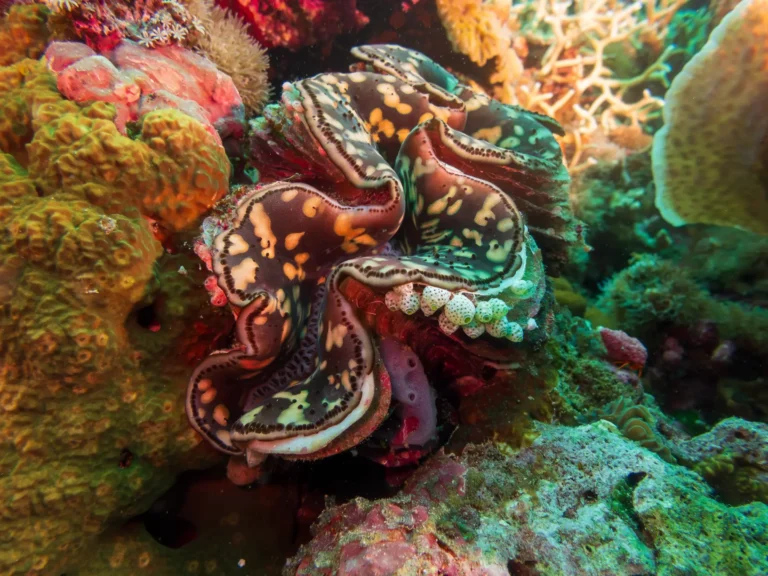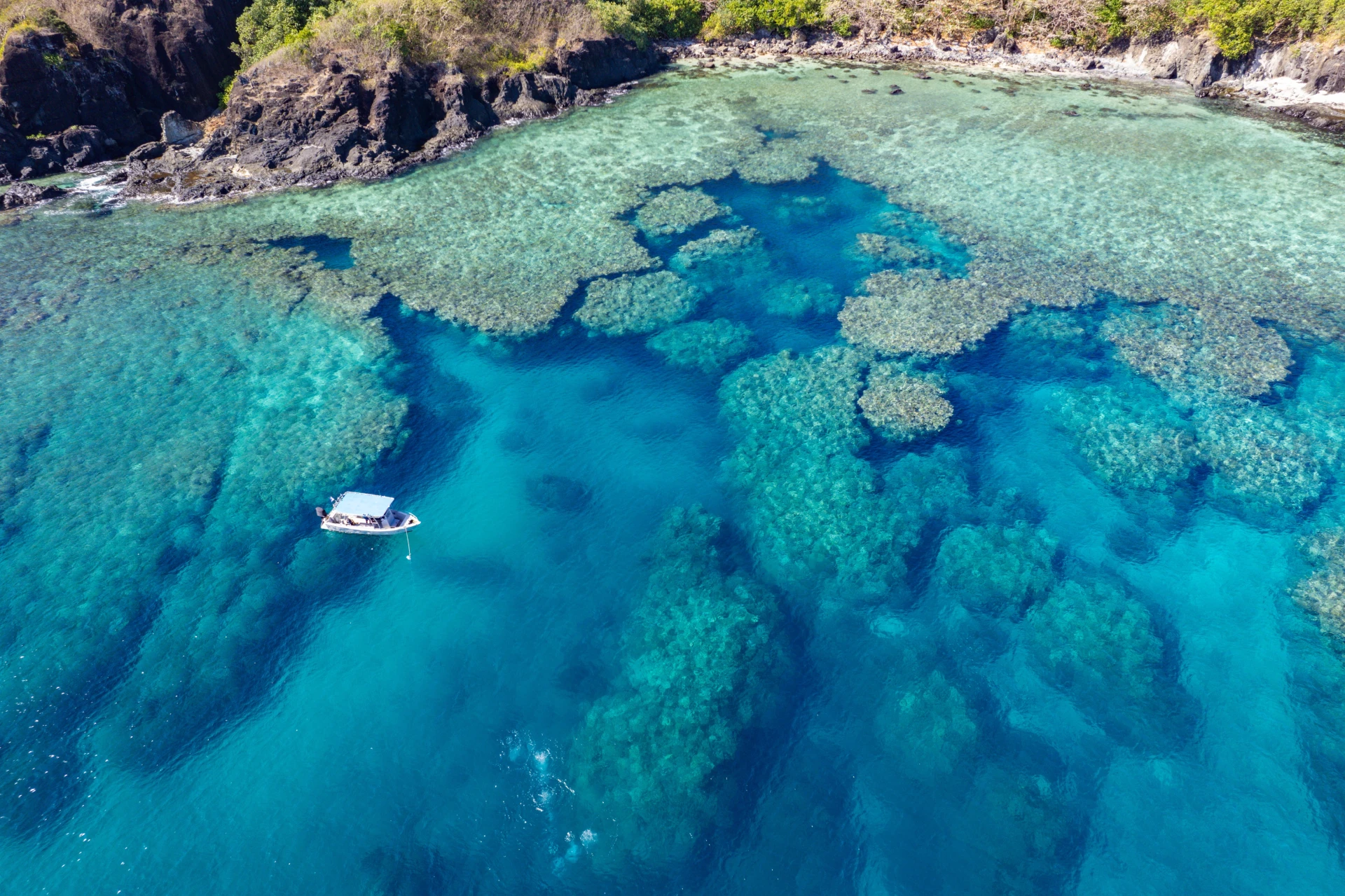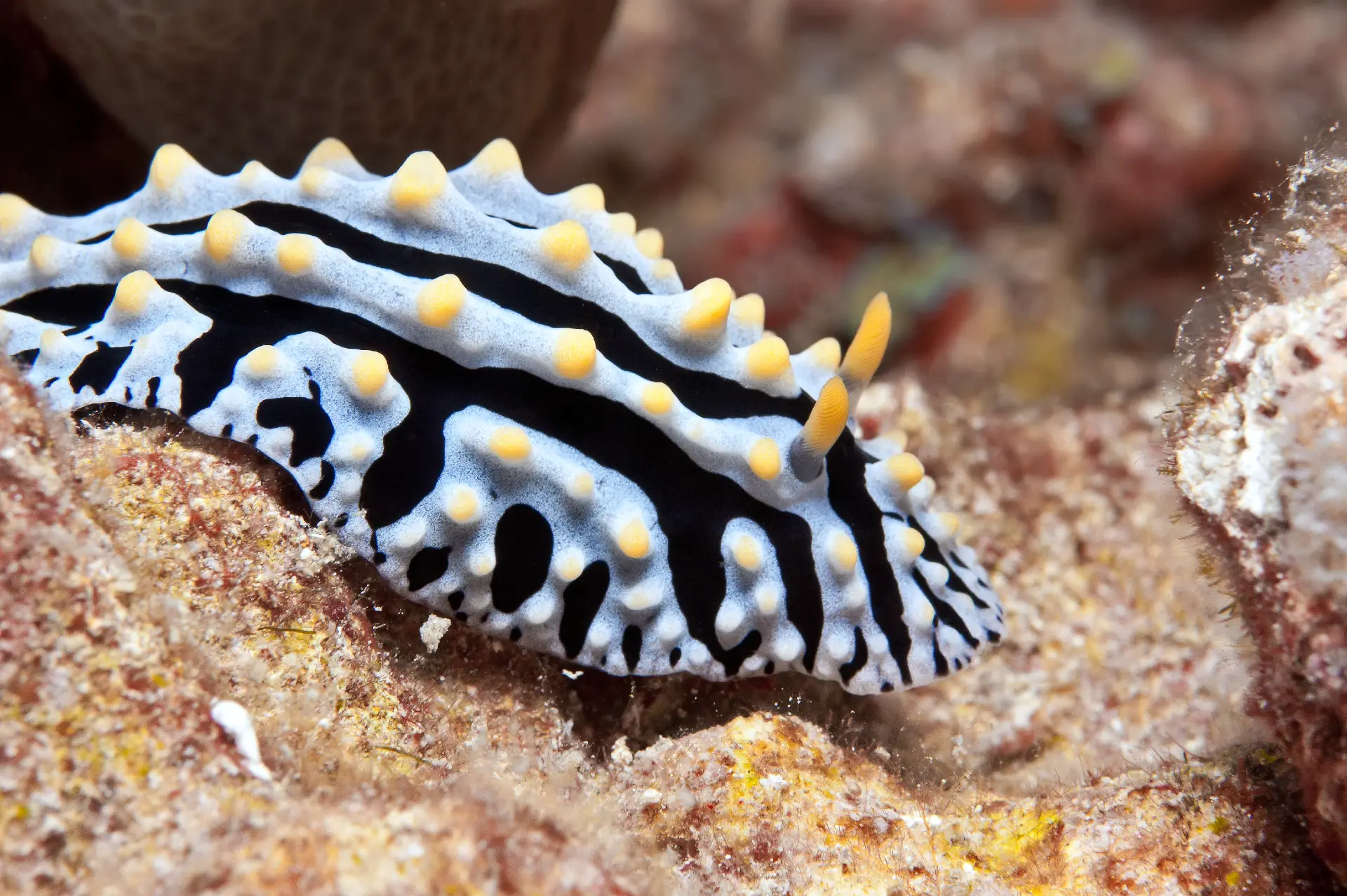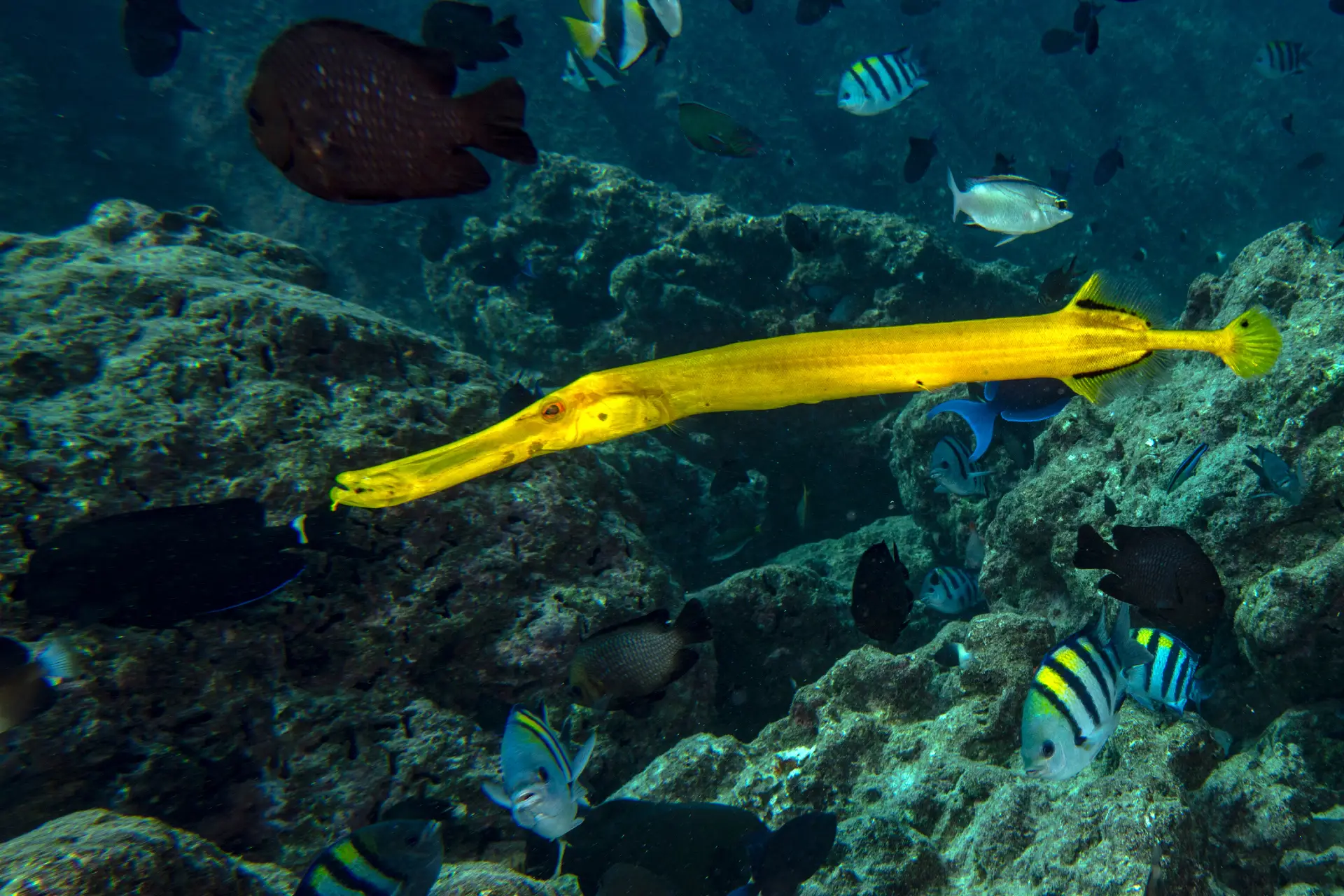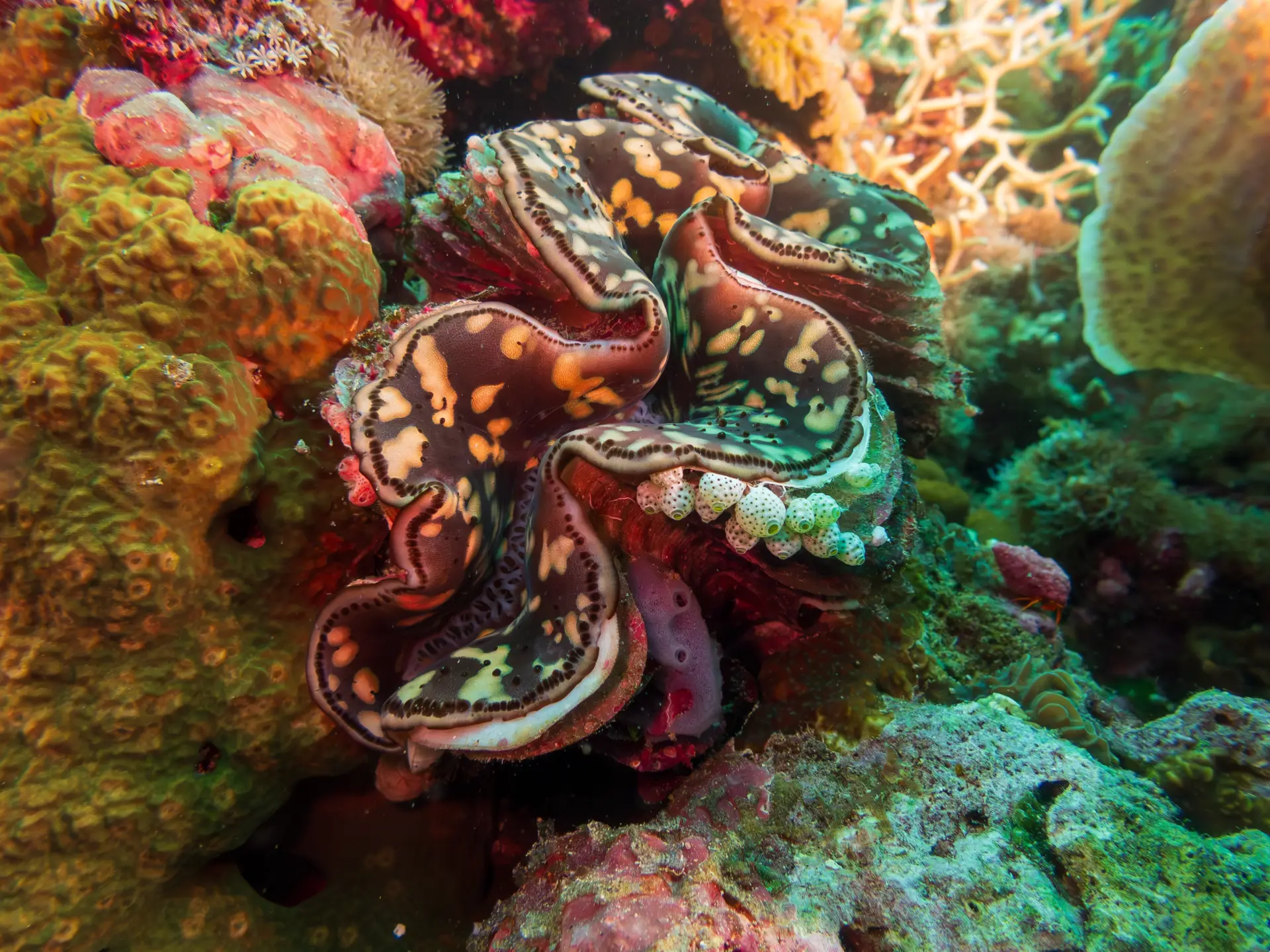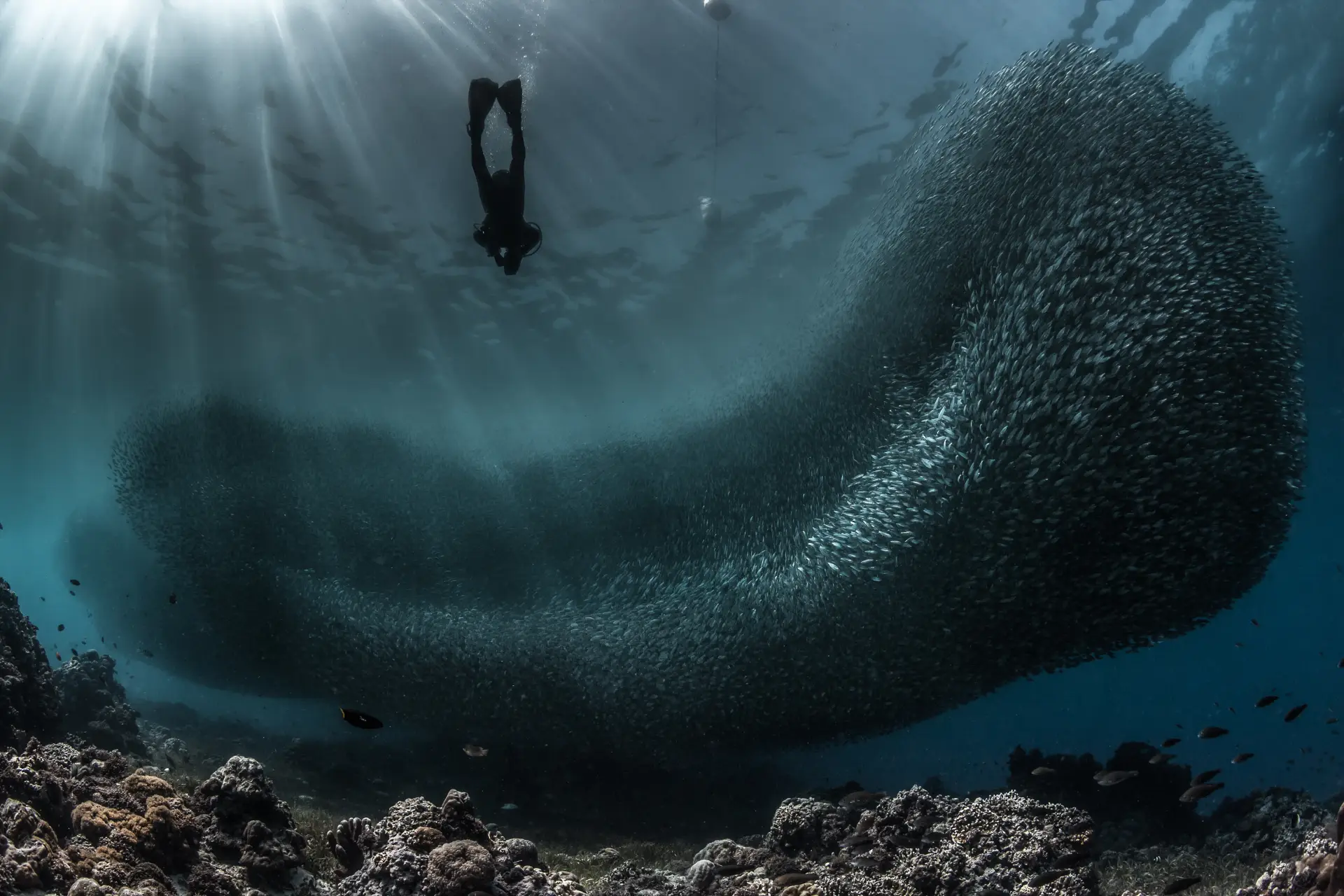The Majestic Napoleon Wrasse of Bohol: A Rarity Worth Protecting
When diving in Bohol, every descent holds the promise of a new discovery—an encounter with marine life so unique it feels like a brush with royalty. Among these regal reef dwellers, one species stands out for its size, color, and charisma: the Napoleon wrasse (Cheilinus undulatus). Also known as the humphead wrasse, this remarkable fish is both a diving icon and an endangered species, making every sighting in Bohol’s waters something truly special.
Let’s take a closer look at this gentle giant, the threats it faces, where you might spot one in Bohol, and why protecting it matters more than ever.
Meet the Napoleon Wrasse: Big, Bold, and Beautiful
The Napoleon wrasse is one of the largest reef fish in the world, capable of growing up to 2 meters long and weighing over 180 kilograms. They’re instantly recognizable thanks to:
- A prominent hump on their forehead (especially in mature males)
- Thick lips and a curiously expressive face
- Vibrant, iridescent coloration in shades of blue, green, and turquoise
- Maze-like facial markings that look almost hand-drawn
Despite their imposing appearance, Napoleon wrasse are gentle, solitary creatures. They’re often found cruising slowly over coral reefs, feeding on hard-shelled invertebrates like mollusks, sea urchins, and crustaceans. They even eat the toxic crown-of-thorns starfish, helping protect reef ecosystems.
Rare Sightings in Bohol
In Bohol, Napoleon wrasse sightings are uncommon but not unheard of—and always memorable. They tend to favor healthy reef systems with complex coral structures, where they can find both food and shelter.
Best places to possibly spot a Napoleon wrasse in Bohol:
- Balicasag Island – Particularly along the deeper walls and outer reef slopes
- Pamilacan Island – Offers remote and less crowded reef zones where larger fish roam
- Deeper dive sites off Panglao – Rare encounters may occur, especially early in the morning
It’s not unusual for divers to return to the boat glowing with excitement after a surprise encounter with this elusive fish. And while they may not stick around long, their graceful presence leaves a lasting impression.
A Species in Peril: Why the Napoleon Wrasse Is Endangered
Globally, the Napoleon wrasse is classified as Endangered on the IUCN Red List. Its population has plummeted due to a combination of factors:
- Overfishing – Especially for the live reef fish trade, where mature males are targeted for their size and appearance
- Slow reproductive rate – They mature late and reproduce infrequently, making recovery difficult
- Habitat degradation – Coral reef damage from pollution, destructive fishing practices, and climate change further reduce their chances of survival
In the Philippines, these threats are very real. The Napoleon wrasse is listed under CITES Appendix II, meaning international trade is regulated. Nationally, it is protected under Republic Act No. 10654, making capture, sale, or export illegal without proper permits.
But enforcement remains a challenge, and awareness is key to conservation.
The Importance of Protecting the Napoleon Wrasse
So why should we care about this particular fish? Beyond its visual appeal, the Napoleon wrasse plays an important ecological role:
- Controls coral predators – By feeding on organisms like the crown-of-thorns starfish, it helps keep coral reefs healthy
- Indicates reef health – Its presence is often a sign of a well-balanced, thriving reef ecosystem
- Supports eco-tourism – For many divers, seeing a Napoleon wrasse is a bucket-list experience that supports responsible dive tourism
In short, protecting the Napoleon wrasse helps protect the reef itself—and all the marine life (and livelihoods) that depend on it.
What Divers Can Do to Help
As divers and ocean lovers, we have an important role to play in protecting this species. Here’s how:
✅ Never support restaurants or markets selling reef fish—especially large, slow-growing species like the Napoleon wrasse.
✅ Practice good buoyancy control to avoid damaging the coral habitats they rely on.
✅ Avoid flash photography or chasing if you encounter one while diving.
✅ Report sightings to your dive operator or local conservation groups to help monitor their presence.
✅ Choose dive shops committed to conservation—like Sierra Madre Divers!
Every small action contributes to a larger culture of respect and responsibility beneath the waves.
A Regal Encounter You Won’t Forget
There’s something majestic about the Napoleon wrasse—a creature that exudes quiet power and dignity as it glides over the reef. Seeing one in the wild is a rare privilege, especially in a place like Bohol, where conservation efforts and responsible diving are helping to protect these incredible animals.
At Sierra Madre Divers, we believe that every dive is an opportunity to learn and protect. If you’re lucky enough to spot a Napoleon wrasse on one of our dives, we’ll make sure it’s a moment you’ll never forget—and one that helps fuel your passion for the ocean.
🌊 Ready to explore Bohol’s reefs and search for its most majestic residents? Join us at Sierra Madre Divers and discover why the Napoleon wrasse is truly the king of the coral kingdom.

